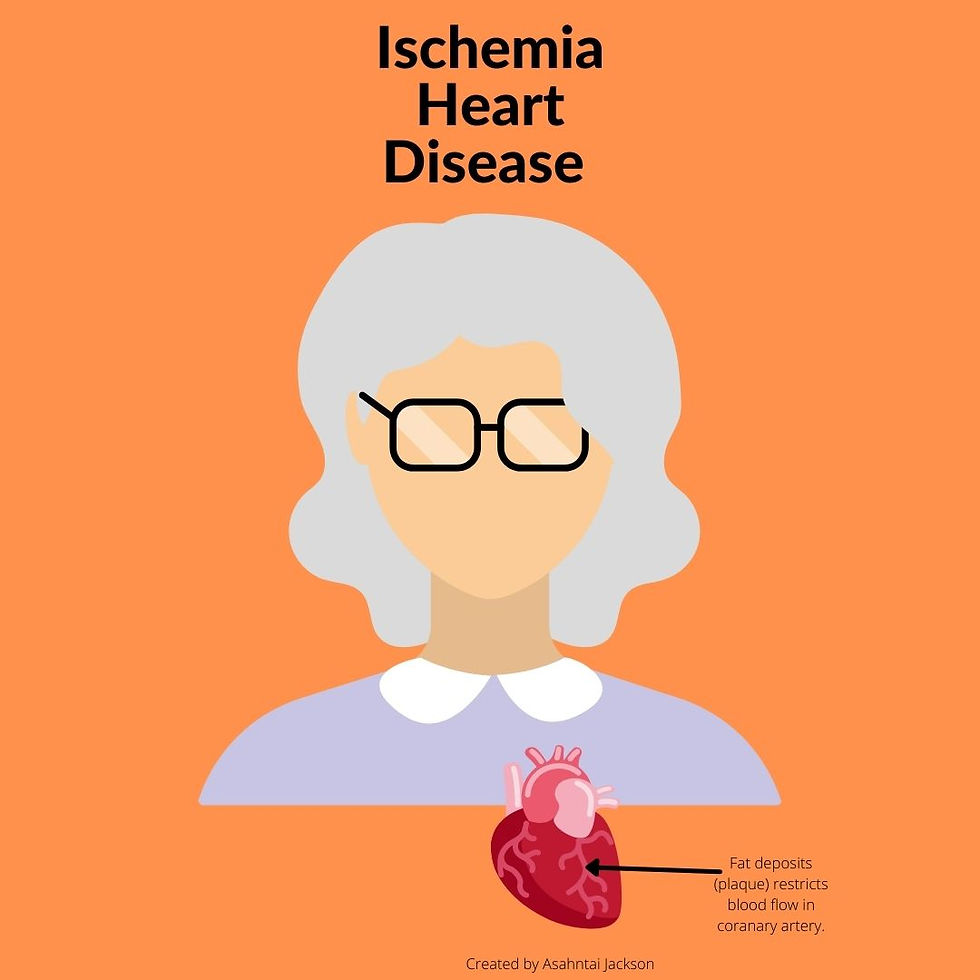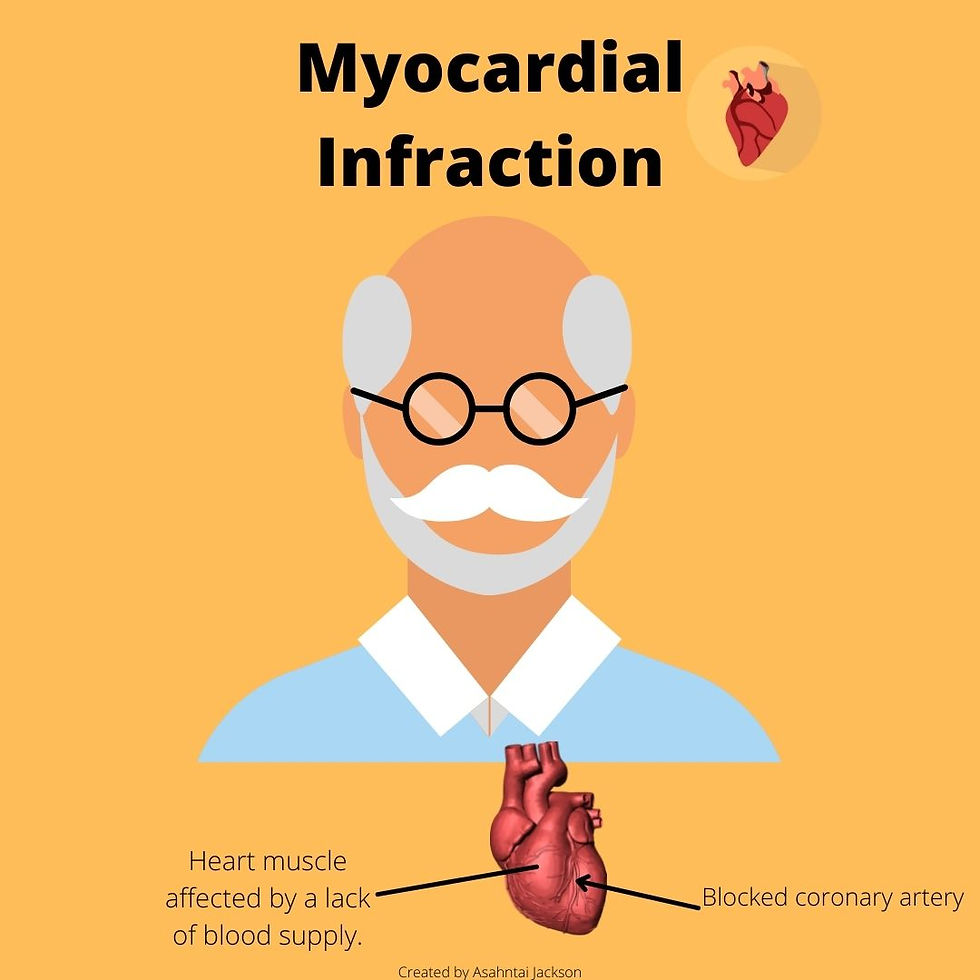How California’s Wildfires Can Cause Cancer and Other Illnesses
- asahntai
- Dec 15, 2021
- 5 min read
Updated: Dec 27, 2021
Particulate Matter (PM2.5) is one of the main components and integrant of smoke with an aerodynamic diameter of 2.5 micrometers. PM2.5 is the smallest and most harmful particulate matter because of its diameter. Heart and lung health effects and impacts is associated with particulate matter. The health impacts are a result from exposure to wildfire smoke. According to health officials, particulate matter may also affect the body’s physiological mechanism.

Infographic created by Asahntai Jackson
Rebecca Dezube, MD, MHS, Johns Hopkins University says that “an average person breathes more than 5, 000 gallons of air every 24 hours.” She also says that “only extremely small particles, less than 3 to 5 microns in diameter, penetrate to the deep lung.”
“The air we breathe contain potentially harmful gases and particles,” Dezube says, “particles such as dust and soot, bacteria, mold, fungi, bacteria, and viruses contain potentially harmful particles and gases,” she added. Dezube also says that the respiratory system has a defense mechanism to clean and protect itself. “The mucus layer traps pathogens (potentially infectious microorganism) and other particles, preventing them from reaching the lungs,” Dezube explained.
Particles from smoke can reduce and decrease lung function and cause a prolonged period of coughing. Dezube says that “pathogens and particles that are trapped on the mucus layer are coughed out or moved to the mouth and swallowed.” The United States Environmental Protection Agency (EPA) says these particles from smoke are “small enough to get deep into the lungs and the tiniest, ultrafine particles can pass directly into the bloodstream.” Experts say exposure to particles and particle pollution or particle matter (PM) from forest fires, such as ones in California, are the primary source of illnesses and premature death.
Californians experienced some of the most destructive wildfire seasons. These wildfires have deleterious effects on well-being and overall health. Unusual and uncommon drought and heat exacerbated by climate change are one of the main sources of catastrophic wildfires in California. The long-term pattern of climate with its intensified drought conditions in much of California have caused severe, extreme, and exceptional drought.
Professor Barton “Buzz” Thompson, Stanford Law School Professor, says that “the drought situation that we have right now, however, is one that we will continue to face, again broken up occasionally by floods. And those droughts are a major cause of, again, the wildfires that we’re seeing right now, as well as a large number of other problems.” The state hasn’t fully emerged from drought. Consequently, the conditions of drought periods and intensified temperatures create wildfires that spread very quickly and at a great rate across California.
“Not only are things bad, but they are just far worse than what we have seen before,” says Thompson. To avoid such adverse impacts from wildfire and smoke, mitigation measures along with forest management need to be implemented in California. Professor Thompson is not surprised either, “wildfires are part of just a much larger problem,” he says. “And I would say that larger problem-you know, really, the ultimate problem-is climate change.” Thompson went on to say that “one thing we can expect from climate change is that disastrous events-droughts, fires and the like- that may have occurred in the past, will occur more frequently in the future, and they will be even worse than they were.”
That’s exactly what has been proven time and time again. The largest wildfires in California occurred in 2020. It was the first notably largest fire season ever recorded. “Climate change is also leading to another big problem, which is drought and lack of water,” says Thompson. “And that lack of water can also impact wildfires.” Burning of fossil fuel is the primary cause of climate change. Research from the California Air and Resource Board (CARB) shows that climate change or changes in climate “increases the frequency and severity of wildfires in California.”
Large wildfires in California produce the most intense and hazardous smoke and should be regarded as a threat. Smoke exposure from these fires is the likely source of premature death. People in California with ailing health problems and diseases are especially at high-risk if exposed in such conditions or near where there is smoke or wildfires. In healthy individuals, wildfires produce smoke that poses serious health risk and increases their chance of developing a chronic disease, sickness, or illness. Young children with asthma, or allergies, etc., first responders, and pregnant women are also at risk.
The elderly in California is also susceptible to wildfire smoke health effects due to having cardiovascular issues, such as: Ischemia Heart Disease (IHD), which is damage or disease in the heart’s major blood vessel.

Infographic created by Asahntai Jackson
Congested Heart Failure (CHF), which is a chronic condition in which the heart doesn’t pump blood as well as it should. The elderly with this condition is especially at risk.

Image from Central Georgia Heart Center
Those who have acute myocardial infarction (MI), which is myocardial necrosis resulting from acute obstruction of a coronary artery are at a risk as well.

Infographic created by Asahntai Jackson
Exposure to wildfire smoke could present a peril of adverse events or cardiac arrest for that group of elderly people in California with those heart diseases and conditions stated above.
In 2015, a population-based epidemiologic analysis was conducted for daily cardiovascular and cerebrovascular emergency department visits that was associated with wildfire smoke exposure in California. The analysis shows elevated risk for individuals, particularly those over aged 65 years old who visited the emergency department (ED). The analysis’s investigation shows that there is an association between wildfire smoke and emergency department (ED) visits in California. The analysis found that there was a connection and relation associated with cardiovascular and cerebrovascular emergency visits for all adults.
The conclusion drawn from this analysis states that the elevated risk for individual diagnoses includes: “myocardial infraction, ischemic heart disease, heart failure, dysrhythmia, pulmonary embolism, ischemic stroke, and transient ischemic attack.”
Pregnant women in California who are exposed to wildfire smoke are susceptible to adverse effects with their pregnancy and baby. A study from Stanford University, estimated the “associations between wildfire smoke exposure during pregnancy and risk of preterm birth in California” was at 6,974 excess preterm births. That number attributed to wildfire smoke exposure in California from 2007-2012. During that time, the study states that it accounted for 3.7% of observed preterm births.


Photos by Asahntai Jackson
When the Air Quality Index (AQI) reaches levels that are considered unhealthy for sensitive groups, experts urge those sensitive groups to limit outdoor activity. CARB recommends owners with pets to bring your pet indoors, if possible because they can be affected by wildfire smoke and unhealthy air.


Photos by Asahntai Jackson

The chart is based on an EPA chart found on AirNow
Experts advise people in California who must be outdoors for long periods of time, or in areas where heavy smoke or ash is nearby should use a NIOSH-certified 95 respiratory mask. Inhaling or breathing in enormous amounts of smoke can cause adverse consequences and a variety of health effects and a development of harmful problems, including cancer-causing substances and properties.

Photo by Asahntai Jackson



Comments